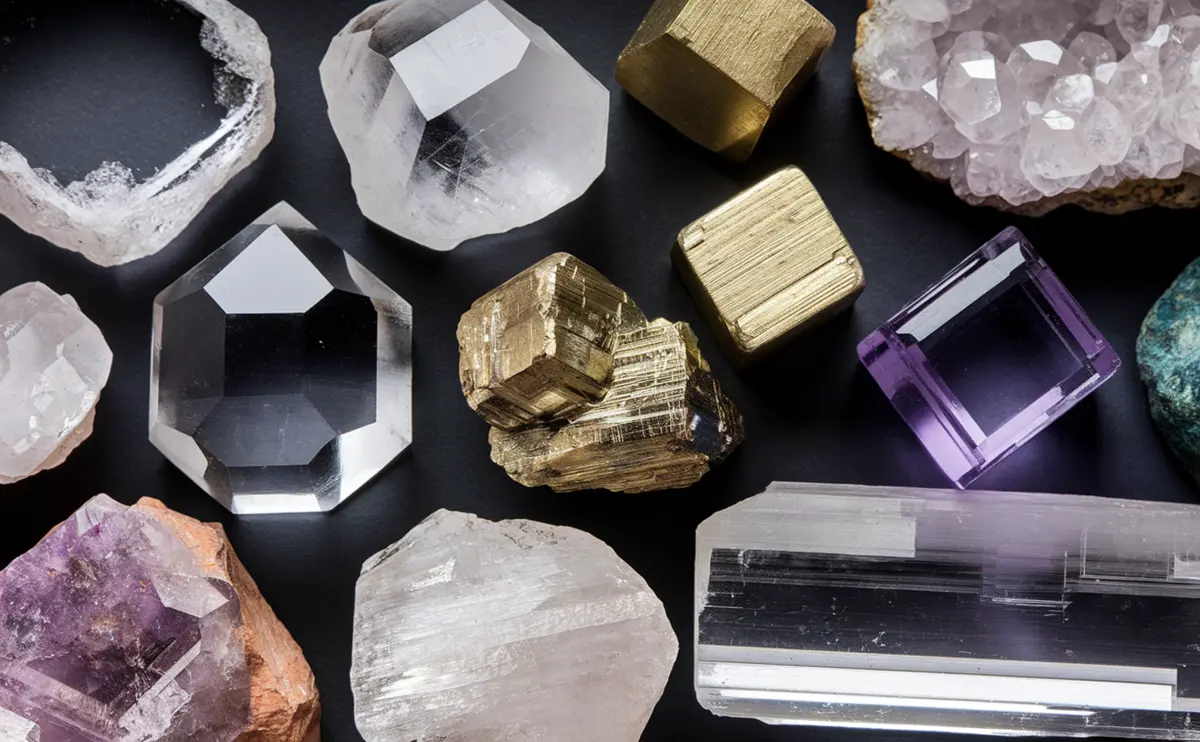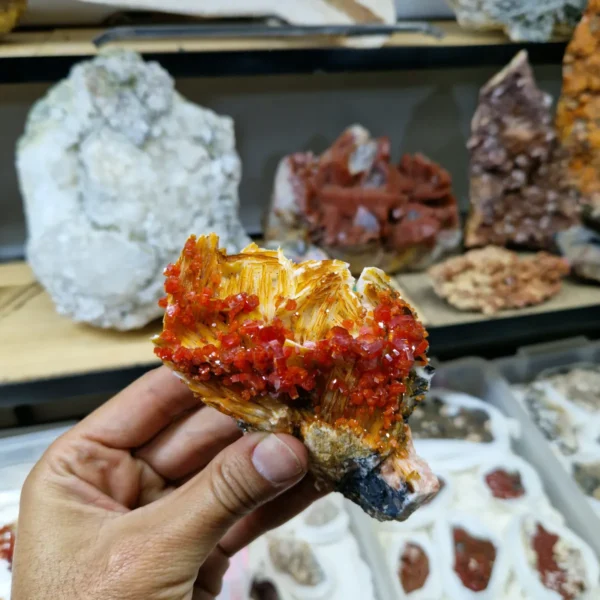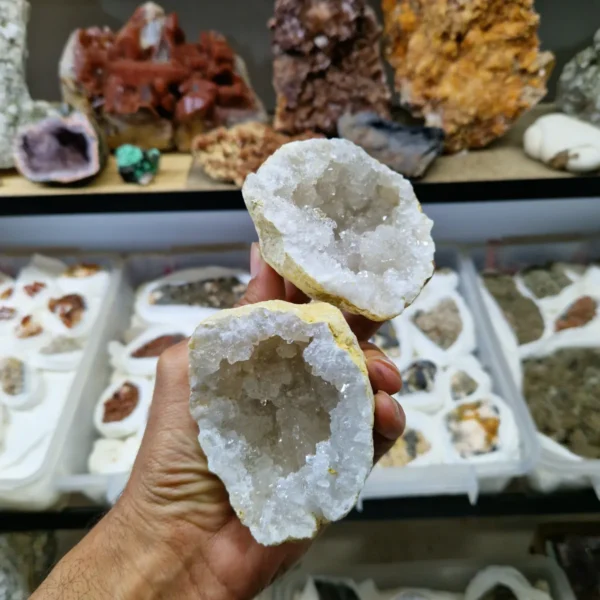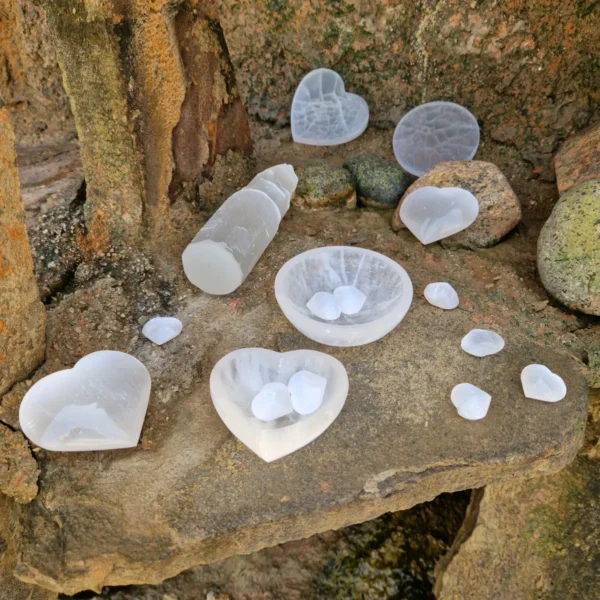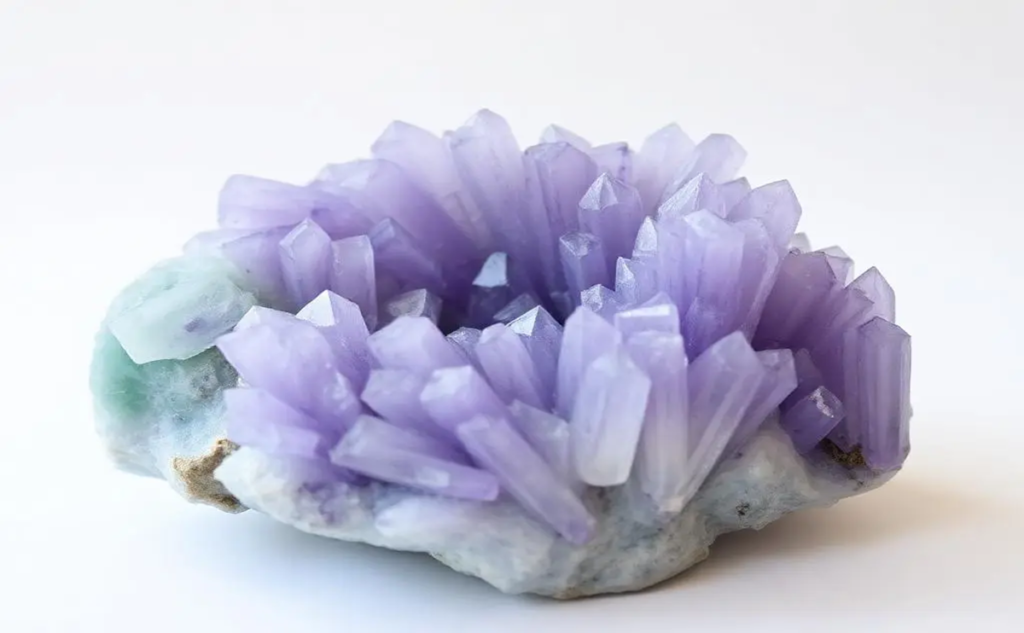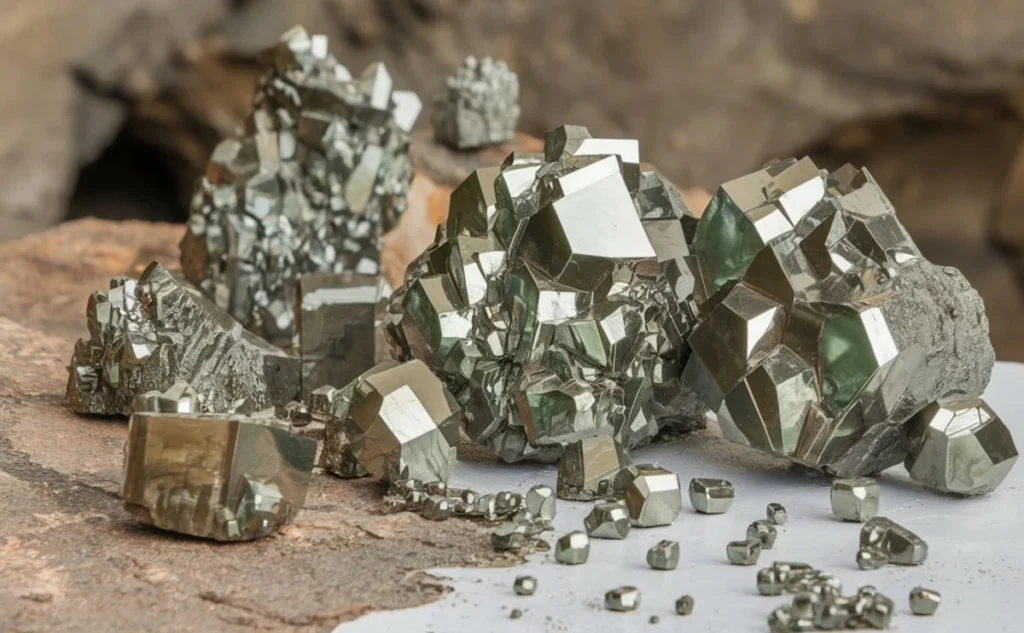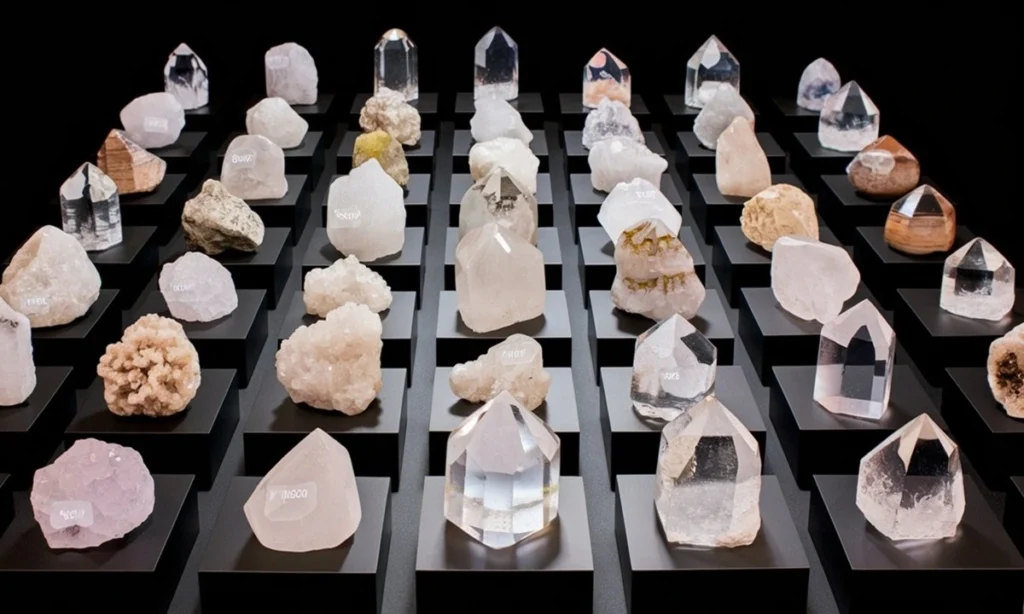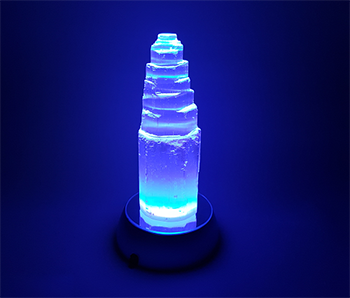Mineral collecting is one of the most fascinating and rewarding hobbies for beginners and enthusiasts alike. Whether you are drawn by the natural beauty of crystals, the geology behind their formation, or the thrill of discovering something ancient, starting your own mineral collection can be an enriching experience. However, for newcomers, knowing which minerals to start with can be overwhelming. Some minerals are more beginner-friendly due to their abundance, durability, and availability.
In this article, we’ll explore the top 5 minerals every beginner collector should know. Along the way, we’ll cover their key features, where they’re commonly found, and why they’re ideal for new collectors.
Table of content / Jump to
Quartz – The Essential Starting Point
Calcite – A Common but Fascinating Mineral
Pyrite – The Famous “Fool’s Gold”
Fluorite – The Colorful Collector’s Favorite
Selenite (Gypsum) – A Soft but Stunning Mineral
Why These Minerals Are Ideal for Beginners
Tips for Beginner Mineral Collectors
Frequently Asked Questions (FAQ)
1. Quartz – The Essential Starting Point
When it comes to minerals, quartz is often the first name mentioned. As one of the most abundant minerals on Earth, quartz appears in a wide range of varieties and colors.
Key characteristics of quartz:
- Chemical formula: SiO₂ (silicon dioxide)
- Hardness: 7 on the Mohs scale (very durable)
- Colors: Clear, white (milky quartz), purple (amethyst), pink (rose quartz), brown (smoky quartz)
Quartz is ideal for beginners because it is abundant, affordable, and easy to identify. Its crystal habit (six-sided prisms) makes it visually appealing, and its hardness ensures that it won’t scratch easily. Varieties like amethyst and rose quartz are especially popular among collectors due to their vibrant colors.
Where to find quartz: Almost everywhere! Notable sources include Brazil, Arkansas (USA), Madagascar, and Morocco.
2. Calcite – A Common but Fascinating Mineral
Calcite is another essential mineral for beginner collectors. While it’s softer than quartz, it comes in an astonishing variety of crystal forms and colors.
Key characteristics of calcite:
- Chemical formula: CaCO₃ (calcium carbonate)
- Hardness: 3 on the Mohs scale
- Colors: Clear, white, orange, green, blue, and more
- Special feature: Double refraction (objects viewed through a clear calcite crystal appear doubled)
Calcite is a great teaching mineral because it demonstrates many important geological properties. Its perfect cleavage allows it to break into neat rhombohedral shapes, making it easy to identify. It also reacts with hydrochloric acid, fizzing due to the release of carbon dioxide.
Where to find calcite: Common worldwide, especially in limestone caves, Iceland (Iceland spar), and Mexico.
3. Pyrite – The Famous “Fool’s Gold”
One of the most exciting minerals for beginners is pyrite, often nicknamed “fool’s gold” because of its metallic luster and golden color.
Key characteristics of pyrite:
- Chemical formula: FeS₂ (iron sulfide)
- Hardness: 6–6.5 on the Mohs scale
- Appearance: Metallic, brassy yellow, cubic or octahedral crystals
Pyrite captures attention immediately because of its dazzling metallic shine and unique cubic crystal formations. While it’s not actually gold, its resemblance teaches collectors how to differentiate between lookalike minerals. Its durability and affordability also make it a must-have specimen for starting a collection.
Where to find pyrite: Spain (famous for perfect cubes), Peru, USA, and China.
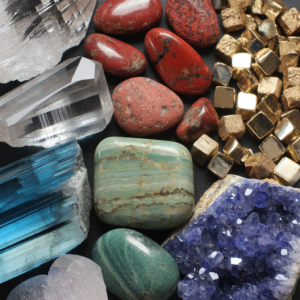
4. Fluorite – The Colorful Collector’s Favorite
For beginners who love color variety, fluorite is the perfect mineral to add to a collection.
Key characteristics of fluorite:
- Chemical formula: CaF₂ (calcium fluoride)
- Hardness: 4 on the Mohs scale
- Colors: Purple, green, blue, yellow, pink, multicolored (banded fluorite)
- Special feature: Fluorescence under UV light
Fluorite is a favorite among collectors because of its vibrant rainbow of colors and its ability to glow under ultraviolet light. Beginners can learn a lot from fluorite, especially about crystal habits, as it often forms in beautiful cubic shapes.
Where to find fluorite: Common in China, Mexico, England, and Illinois (USA).
5. Selenite (Gypsum) – A Soft but Stunning Mineral
Last on our list is selenite, a crystal form of gypsum. While it’s softer and requires careful handling, its translucent beauty makes it highly attractive to collectors.
Key characteristics of selenite:
- Chemical formula: CaSO₄·2H₂O (hydrated calcium sulfate)
- Hardness: 2 on the Mohs scale (very soft)
- Appearance: Clear to white, satin-like glow, often in long crystal blades
Selenite is prized for its delicate, ethereal appearance and is commonly used in decorative carvings, lamps, and spiritual practices. Although it’s fragile, selenite helps beginners understand the diversity of minerals and the importance of proper care in a collection.
Where to find selenite: Morocco, Mexico, and the USA (notably the Giant Crystal Cave in Naica, Mexico).
Why These Minerals Are Ideal for Beginners
- Affordability: All five are widely available and budget-friendly.
- Variety: They showcase different crystal systems, colors, and properties.
- Durability: Most are sturdy enough for handling (except selenite, which teaches careful storage).
- Educational value: Each demonstrates unique geological traits, from quartz’s hardness to fluorite’s fluorescence.
By starting with these minerals, new collectors gain a solid foundation in mineralogy while enjoying the beauty of natural crystals.
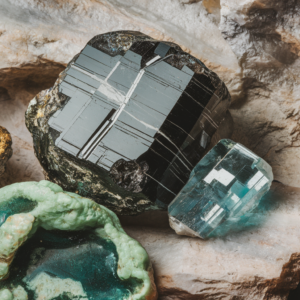
Tips for Beginner Mineral Collectors
- Learn to identify crystals: Study physical properties such as hardness, luster, and crystal habit.
- Store properly: Use display cases or boxes to protect softer minerals like selenite and calcite.
- Buy from reputable sources: Avoid fake or dyed specimens. Trusted suppliers and mineral shows are the best options.
- Label your specimens: Record details such as mineral name, locality, and acquisition date.
- Expand gradually: Start small, then branch out into rarer minerals as you gain experience.
Frequently Asked Questions (FAQ)
- What is the best first mineral for beginners?
Quartz is the best starting point due to its abundance, durability, and beauty. - Are all minerals safe to handle?
Most are safe, but always wash your hands after handling minerals, especially sulfides like pyrite, which may oxidize. - How do I know if a mineral is real or fake?
Check for natural imperfections, hardness, and crystal structure. Buying from reputable dealers helps avoid fakes. - Can I collect minerals from nature?
Yes, but always respect local laws and protected sites. Many countries regulate collecting in certain areas. - What equipment do I need to start collecting?
Basic tools include a rock hammer, chisel, safety goggles, and storage boxes. For home collections, labeling and display cases are essential.
External Resources for Further Reading
Final Thoughts
Mineral collecting is more than just a hobby; it’s a journey into the natural history of our planet. By starting with beginner-friendly minerals such as quartz, calcite, pyrite, fluorite, and selenite, you’ll not only build a beautiful collection but also develop the skills to appreciate the science of mineralogy.
With time, your collection will grow into a reflection of both your curiosity and your passion for Earth’s natural wonders.

